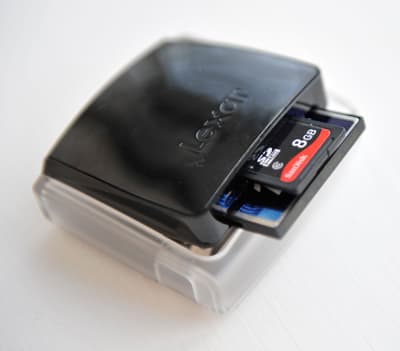Just bought your first DSLR camera? Don’t be intimidated, we will run you through all the things you need to know before you start shooting.
The process of buying a new DSLR camera can be fraught with difficulties, be it from confusing technical jargon, pushy sales assistants or from trying to justify your purchase to a disapproving spouse. But once you’ve made your mind up the next stage is to work out how to use it.
The temptation may be to go out and start taking pictures straight away, but a few considerations beforehand will not only help you get the most out of your image taking, but will also make sure your new DSLR camera behaves as you expect it to.
DSLR Started Guide – The Basics
Formatting your memory card

Formatting your memory card introduces it to your new DSLR camera, clears away any information on it and sets up a folder for your images.
It takes just a few seconds, and it’s a good idea to do this before you begin shooting any images, or whenever you’ve copied its contents elsewhere and you need to clear the card. On many cameras this option is accessible via the setup menu, sometimes marked with a toolbar such as a spanner – your camera’s manual will tell you exactly where this option is.
Camera batteries

Many compacts use AA batteries, which is convenient if you happen to be on the move. Standard alkaline types, however, will run down very quickly, so consider using either nickel metal hydride (NiMH) or lithium-ion varieties as these will offer a better performance. Better still, invest in a charger and a set of rechargeable batteries, which will work out cheaper over time.
Setting up
The next stage is to think about how much control you would like over your DSLR images. Almost all cameras offer an automated setting which takes the hassle out of decision making, and many offer a Program mode (often marked ‘P’) which is similar but typically with a little more control over flash, sensitivity and so on. Scene modes may also be included which change the camera’s settings according to the subject matter. If your camera offers any other controls in additions to these you don’t need to worry about them just yet.

Taking pictures
Taking images isn’t difficult, but sometimes a DSLR camera can fail to deliver the results you may have expected. There are many reasons for this. One is through poor focusing. By default, your camera will be programmed to either focus on whatever is in the center of the frame, or on any dominant or close subject. It focuses when you half-depress the shutter release button on the top of your camera, and it will often indicate it has achieved this with a beep or a by placing a small green box over the subject.
Without this confirmation the camera may not have found correct focus, and this often happens when the shutter release button has been pressed down too quickly. It’s important, therefore, to push this button slowly until you feel a slight resistance – or until you have been notified that focus has been found – then simply continue pressing the button down until the image has been captured.
If the DSLR cannot find focus for any reason something may flash on the LCD screen to warn you, so try taking the image again, perhaps from a slightly different position. It’s amazing how many poorly focused images can be attributed to this not being done correctly.
Viewing your images and keeping them safe

Viewing your images instantly on your DSLR camera’s LCD screen is one of the great joys of digital photography, but it also depletes the battery quickly.
Many people will prefer to examine them in closer detail on a computer, and your camera will be supplied with a USB cable for this task. While there’s nothing wrong with using this it requires your camera to be on, and so again requires battery power. Even worse, if your camera’s battery dies during the process you risk corrupting or losing your images.
A popular solution to this is a card reader, which plugs into your computer in the exactly same way and will typically accept a number of different cards at the same time. As these are powered only by the computer they plug into, this method helps preserve both the contents of your card and your camera’s battery.
A final word of warning: never take a card out of a camera while it is on, as it may still be recording images to the memory card. Almost all cameras offer a small lamp somewhere on the rear which indicates whether any recording is still happening, so make sure you pay attention to it. Otherwise you risk corrupting the information on it, and you may lose your images.






